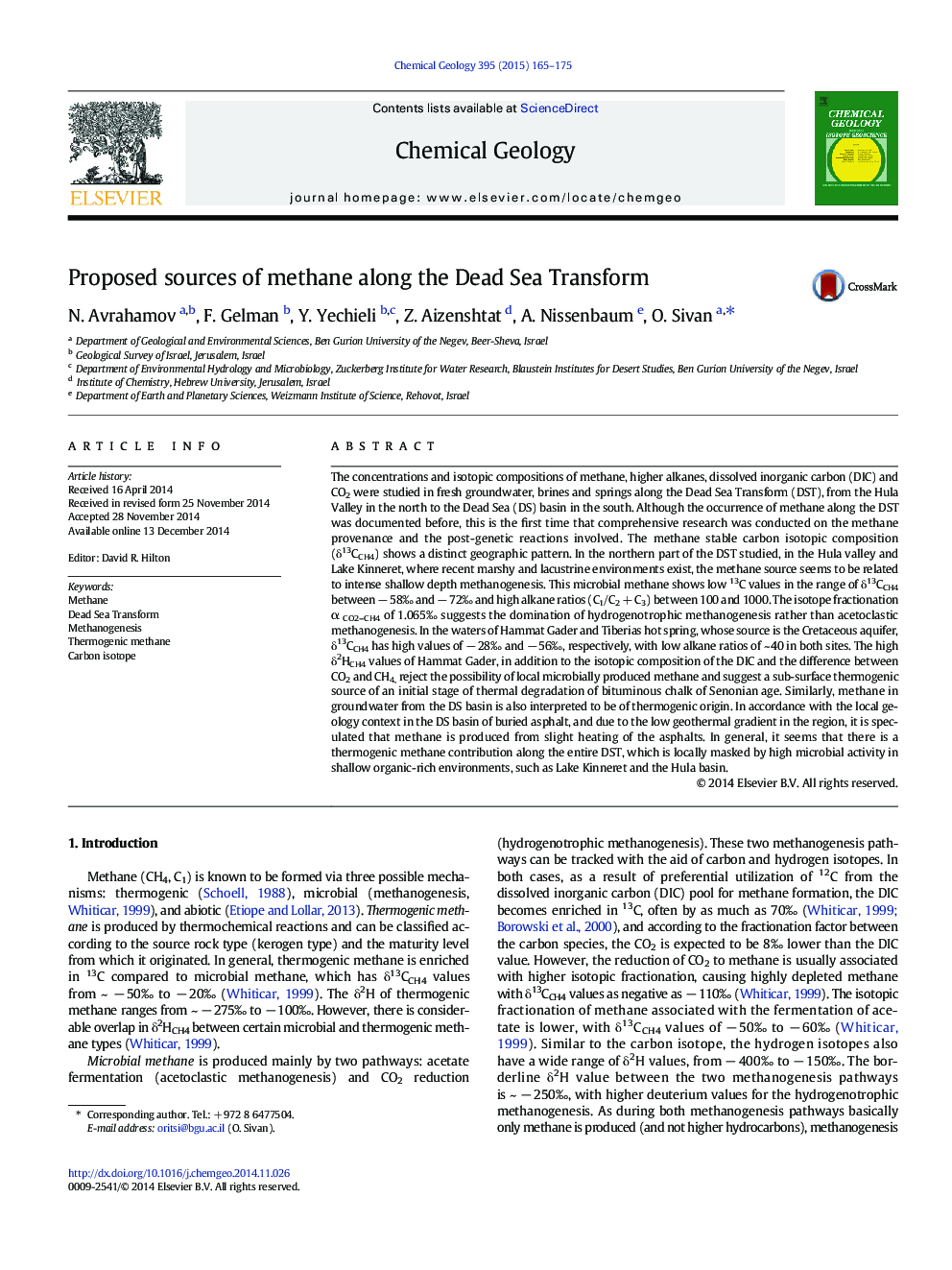| کد مقاله | کد نشریه | سال انتشار | مقاله انگلیسی | نسخه تمام متن |
|---|---|---|---|---|
| 4698588 | 1637578 | 2015 | 11 صفحه PDF | دانلود رایگان |
• We studied the sources of dissolved methane along the Dead Sea Transform.
• The isotope composition of different water types was measured along the transform.
• The source of methane in the Hula and Lake Kinneret is shallow methanogenesis.
• Methane in Hammat Gader and Tiberias hot spring seems to be thermogenic.
• Methane in groundwater from the DS basin seems to be also of thermogenic origin.
The concentrations and isotopic compositions of methane, higher alkanes, dissolved inorganic carbon (DIC) and CO2 were studied in fresh groundwater, brines and springs along the Dead Sea Transform (DST), from the Hula Valley in the north to the Dead Sea (DS) basin in the south. Although the occurrence of methane along the DST was documented before, this is the first time that comprehensive research was conducted on the methane provenance and the post-genetic reactions involved. The methane stable carbon isotopic composition (δ13CCH4) shows a distinct geographic pattern. In the northern part of the DST studied, in the Hula valley and Lake Kinneret, where recent marshy and lacustrine environments exist, the methane source seems to be related to intense shallow depth methanogenesis. This microbial methane shows low 13C values in the range of δ13CCH4 between − 58‰ and − 72‰ and high alkane ratios (C1/C2 + C3) between 100 and 1000. The isotope fractionation α CO2–CH4 of 1.065‰ suggests the domination of hydrogenotrophic methanogenesis rather than acetoclastic methanogenesis. In the waters of Hammat Gader and Tiberias hot spring, whose source is the Cretaceous aquifer, δ13CCH4 has high values of − 28‰ and − 56‰, respectively, with low alkane ratios of ~ 40 in both sites. The high δ2HCH4 values of Hammat Gader, in addition to the isotopic composition of the DIC and the difference between CO2 and CH4, reject the possibility of local microbially produced methane and suggest a sub-surface thermogenic source of an initial stage of thermal degradation of bituminous chalk of Senonian age. Similarly, methane in groundwater from the DS basin is also interpreted to be of thermogenic origin. In accordance with the local geology context in the DS basin of buried asphalt, and due to the low geothermal gradient in the region, it is speculated that methane is produced from slight heating of the asphalts. In general, it seems that there is a thermogenic methane contribution along the entire DST, which is locally masked by high microbial activity in shallow organic-rich environments, such as Lake Kinneret and the Hula basin.
Journal: Chemical Geology - Volume 395, 24 February 2015, Pages 165–175
